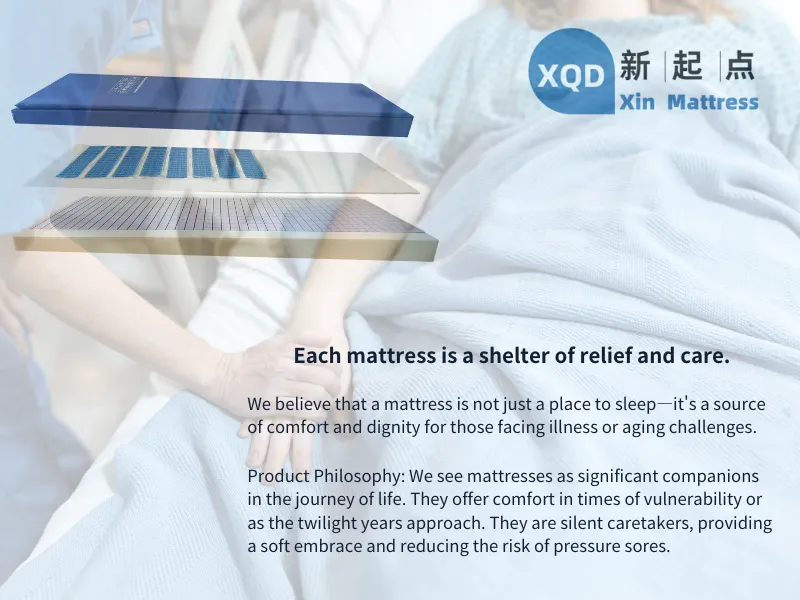Pressure Relieving Mattress for Pressure Ulcers: A Key Line of Defense for Protecting Patients' Skin Health
Pressure ulcers, also known as bedsores, are a common and difficult complication in long-term bedridden patients. It not only brings additional pain to patients and affects the rehabilitation process, but in severe cases, it may also cause infection and threaten life and health. Among the numerous measures for preventing and treating pressure ulcers, pressure reducing mattresses play an irreplaceable and important role.

Working Principle of Pressure Reducing Mattress
The core design of a pressure relieving mattress is to disperse pressure, reduce the pressure on specific parts of the body, improve blood circulation in the affected area, and prevent and alleviate pressure ulcers. Its working principle is mainly achieved through the following ways:
- Evenly disperse the pressure: use special materials and structural design, such as high elastic foam, gel or air, to evenly distribute the body weight of patients on the mattress surface. For example, some decompression mattresses use high-density memory foam, which can automatically shape according to the patient's body contour, fit the body curve, and avoid local pressure concentration.
- Dynamic pressure regulation: Some advanced pressure reducing mattresses are equipped with dynamic pressure regulation systems that can monitor pressure changes in various parts of the patient's body in real time, and dynamically balance pressure by adjusting the support structure or inflation volume inside the mattress. For example, an intelligent inflatable pressure relief mattress senses pressure distribution through built-in pressure sensors and automatically inflates or deflates airbags in different areas to ensure that pressure is always maintained within a safe range.
- Reduce friction and shear forces: High quality decompression mattresses typically have low friction coefficients on their surface materials, which can reduce the friction between the patient's skin and the mattress when turning over or moving. At the same time, through reasonable angle design and support methods, the shear force between the body and the mattress is reduced to avoid skin damage caused by friction and shear forces.
The Clinical Application Effect of Pressure Reducing Mattress
Numerous clinical studies have shown that pressure reducing mattresses have significant effects in preventing and treating pressure ulcers. In a study of long-term bedridden patients, the incidence of pressure ulcers in the experimental group using pressure reducing mattresses was reduced by more than 50% compared to the control group using regular mattresses.
For patients who have already developed pressure ulcers, a pressure reducing mattress can create favorable conditions for wound healing and accelerate the healing process. For example, in some chronic wound care centers, the use of pressure reducing mattresses and other treatment methods can shorten the average healing time of pressure ulcers by 2-3 weeks.
-
Sleep Tracking Mattress GuideNewsJul.28,2025
-
Silicone Mattress for Everyday ComfortNewsJul.28,2025
-
Mattress for Pressure Point ReliefNewsJul.28,2025
-
Customized Comfort with Specialized MattressesNewsJul.28,2025
-
Cool Gel Foam Mattress for Better SleepNewsJul.28,2025
-
Coir and Foam Mattress GuideNewsJul.28,2025
-
Ambulance Stretcher Mattress: Reliable Comfort on the MoveNewsJul.28,2025

